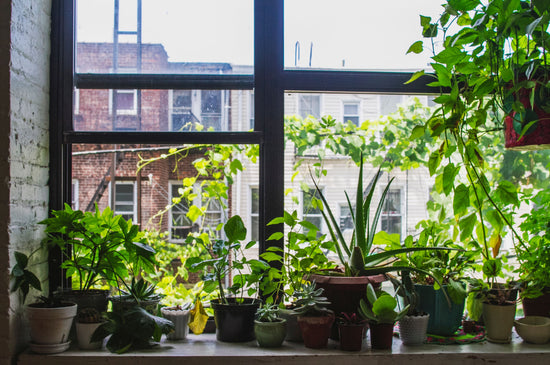How to Use Plant Food for Healthier, Happier Plants
Plant food, or fertilizer, is essential for providing your plants with the nutrients they need to thrive. While plants can get some nutrients from soil, light, and water, adding the right plant food ensures they grow stronger, produce vibrant foliage, and even bloom more beautifully. Here’s a guide to understanding plant food and how to use it effectively for your indoor plants.
What Is Plant Food?
Plant food, commonly referred to as fertilizer, is a nutrient supplement designed to enhance plant growth. It contains essential macronutrients like nitrogen (N), phosphorus (P), and potassium (K), along with micronutrients such as iron, magnesium, and calcium.
- Nitrogen (N): Promotes leafy, green growth.
- Phosphorus (P): Supports root development and flowering.
- Potassium (K): Enhances overall plant health and resistance to stress.
Why Is Plant Food Important?
Over time, the soil in your pots depletes its nutrients, especially if you water frequently or your plant grows vigorously. Plant food replenishes these nutrients, ensuring your plants have everything they need for optimal growth.
When to Use Plant Food
-
During the Growing Season
- Most plants enter their active growth phase in spring and summer. Fertilizing during this time supports new leaves, stems, and flowers.
-
Avoid Dormant Periods
- Many plants slow their growth in fall and winter. Hold off on fertilizing during these months unless it’s a winter-growing plant.
-
After Repotting
- Wait a few weeks before fertilizing newly repotted plants to let them settle and avoid overwhelming their roots.
Types of Plant Food
-
Liquid Fertilizer
- Quick and easy to use, liquid fertilizers mix with water for even distribution. They’re ideal for regular feeding.
- How to Use: Dilute according to package instructions and apply when watering.
-
Slow-Release Fertilizer
- Granules or capsules that release nutrients over time. Great for low-maintenance care.
- How to Use: Sprinkle onto the soil surface and water in to activate.
-
Organic Fertilizer
- Made from natural sources like compost, bone meal, or fish emulsion. Gentle on plants and eco-friendly.
- How to Use: Apply as directed, usually as a liquid or granulated feed.
How to Use Plant Food
-
Read the Label
- Every fertilizer has a recommended dilution ratio and application frequency. Follow these instructions to avoid overfeeding, which can harm your plant.
-
Apply at the Right Time
- Water your plant first, then apply the plant food. Fertilizing dry soil can burn the roots.
-
Adjust for Plant Type
- Flowering Plants: Use a fertilizer higher in phosphorus to support blooming.
- Foliage Plants: Opt for a nitrogen-rich fertilizer to encourage lush, green growth.
-
Use the Right Amount
- Less is more when it comes to plant food. Start with half the recommended amount and observe how your plant responds.
-
Feed Consistently
- Most houseplants benefit from fertilizing every 4–6 weeks during their growing season.
Signs Your Plant Needs Food
- Slow Growth: If your plant isn’t producing new leaves or stems, it may lack nutrients.
- Yellowing Leaves: A common sign of nitrogen deficiency.
- Poor Flowering: Flowers may be small or fail to appear if phosphorus levels are too low.
- Pale or Stunted Foliage: Indicates a lack of essential nutrients like iron or magnesium.
Avoid Overfeeding
Too much fertilizer can lead to fertilizer burn, where salts build up in the soil and damage roots. Signs of overfeeding include brown leaf tips, yellowing leaves, or a white crust on the soil surface. If this happens, flush the soil with water to remove excess salts and hold off on feeding for a few weeks.
FAQs About Plant Food
Q: Can I use plant food on all plants?
A: Most houseplants benefit from plant food, but some, like succulents and cacti, need less frequent feeding. Always match the fertilizer to the plant type.
Q: Is plant food the same as compost?
A: No. Plant food provides immediate nutrients, while compost improves soil structure and gradually releases nutrients.
Q: Can I make my own plant food?
A: Yes! DIY options include diluted coffee grounds, banana peels, or eggshell water for a natural nutrient boost.
Q: Should I fertilize newly purchased plants?
A: Wait a few weeks to fertilize new plants, as they may already have slow-release fertilizer in their soil.
Feeding your plants the right way ensures they stay vibrant and healthy. With the proper type of plant food and careful application, you can support their growth and enjoy a flourishing indoor garden.





